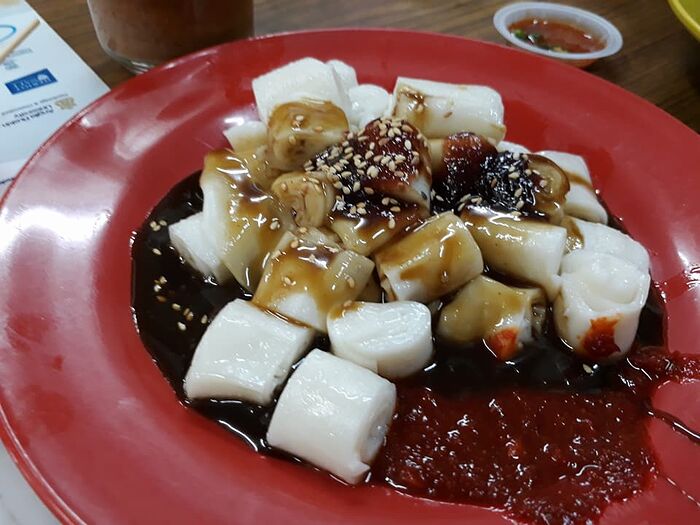New Cathay on the corner of Kuching Lane and Burmah Road in bustling Pulau Tikus is one of the most popular breakfast spots for Penangites. This is my second trip here in a month, this time to sample more Penang hawker food breakfast options.
-
Penang-style wantan mee. Comes with deep-fried wantans (typical to Penang), besides poached wantans, plus “char-siew” (Chinese BBQ pork) which is typical of Malaysian and Singaporean wantan mee.
Interesting to note that HK-style wantan mee no longer have “char-siew” these days - they used to in the old days but the practice died off.
-
Pan mee. This is freshly-rolled out noodles: usually flattened out and cut from a doughball, and flash-cooked in boiling water upon order, before seasoning is added:
-
Teochew steamed yam cake, topped with shallots, scallions and dried shrimps. Delish with a sweet chili sauce dip - one of my fave breakfast options.
-
Penang-style chee cheong fun - with the requisite super-pungent fermented shrimp paste (“hae koh”) typical to Penang, but not found in chee cheong fun renditions anywhere else in Malaysia or Singapore.
-
Siew mai. This is the golf ball-sized steamed pork-shrimp dumplings typically served in coffeeshops, hawker centres or market food stalls in Malaysia/Singapore, and which are coarser in texture and more robust-tasting, compared to the dainty “siew mai” dumplings served in “yum cha” teahouses or proper Chinese restaurants.
-
Chinese Mee Jawa. A not-so-spicy and more tomato-ey rendition of Malay-style Mee Jawa. I actually prefer Chinese versions as I find the flavours are lighter and more subtle.
-
Roti Babi. A hard-to-find Nyonya snack of fried bread sandwiches with pork-vegetable filling. These are typically served with home-brewed Worcestershire sauce, which has a gentler and more mellow flavour compared to bottled ones like Lea & Perrins.
The breakfast crowd packs into New Cathay from 7.30am onwards and it gets busier as the morning wore on. There is a slight respite between 11am and 12 noon, after which the pace picks up again for the lunch-time crowd. In short, this is a VERY busy coffeeshop. It closes down right after lunch-time.
Address
Kedai Kopi New Cathay
425, Jalan Burmah, (corner with Lorong Kuching, 10350 George Town, Penang
Tel: +6016 452 1378
Opening hours: 8am to 2.30pm Mon-Sat, closed on Sunday









